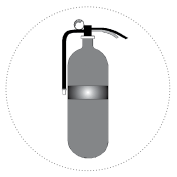 Fire extinguishers are described according to the types of fires they are used to extinguish. Some extinguishers are filled with water, while others are filled with dry chemicals. The five basic types of fire extinguishers are:
Fire extinguishers are described according to the types of fires they are used to extinguish. Some extinguishers are filled with water, while others are filled with dry chemicals. The five basic types of fire extinguishers are:
- Water
- Multi-purpose dry chemical
- Foam
- Carbon dioxide
- Halogenated agent
Water – This type of extinguisher discharges a stream of water. It must be protected from freezing. ** Can add non-flammable antifreeze to water.
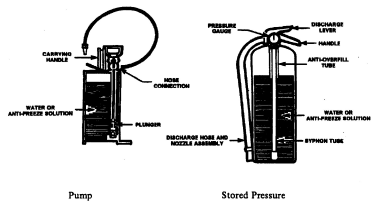
Multi-purpose dry chemical – This type of extinguisher is a stored-pressure dry chemical container with a fixed nozzle.
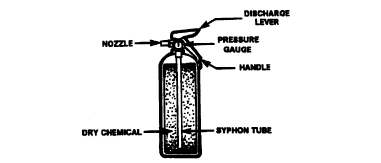
Foam – This type of extinguisher is filled with a water and detergent mixture which forms a foamy solution. This solution must be protected from freezing and may leave a residue.
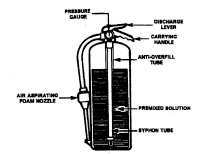
Carbon dioxide – Carbon dioxide is an inert gas. This type of extinguisher discharges a cold white cloud that smothers the flames and leaves no residue.
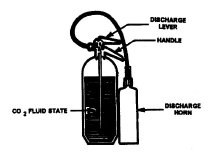
Halogenated (Halon) Agents – This type of extinguisher can be dangerous. It works by creating a chemical reaction which smothers the fire.
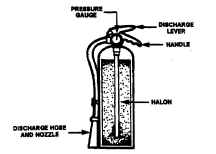
CAUTION: Toxic fumes are produced by this chemical reaction and, in a small area, an individual could be overcome by the fumes.
Small fires on the job may be extinguished by the use of proper portable fire extinguishers. However, even if you successfully extinguish a fire, you must still contact the fire department. If you are certain that the fire is completely out, call the fire department USING A NON- EMERGENCY TELEPHONE NUMBER. The fire personnel will advise you whether or not one of their officers will follow up. You may need their assessment for insurance purposes, if not for safety reasons.
